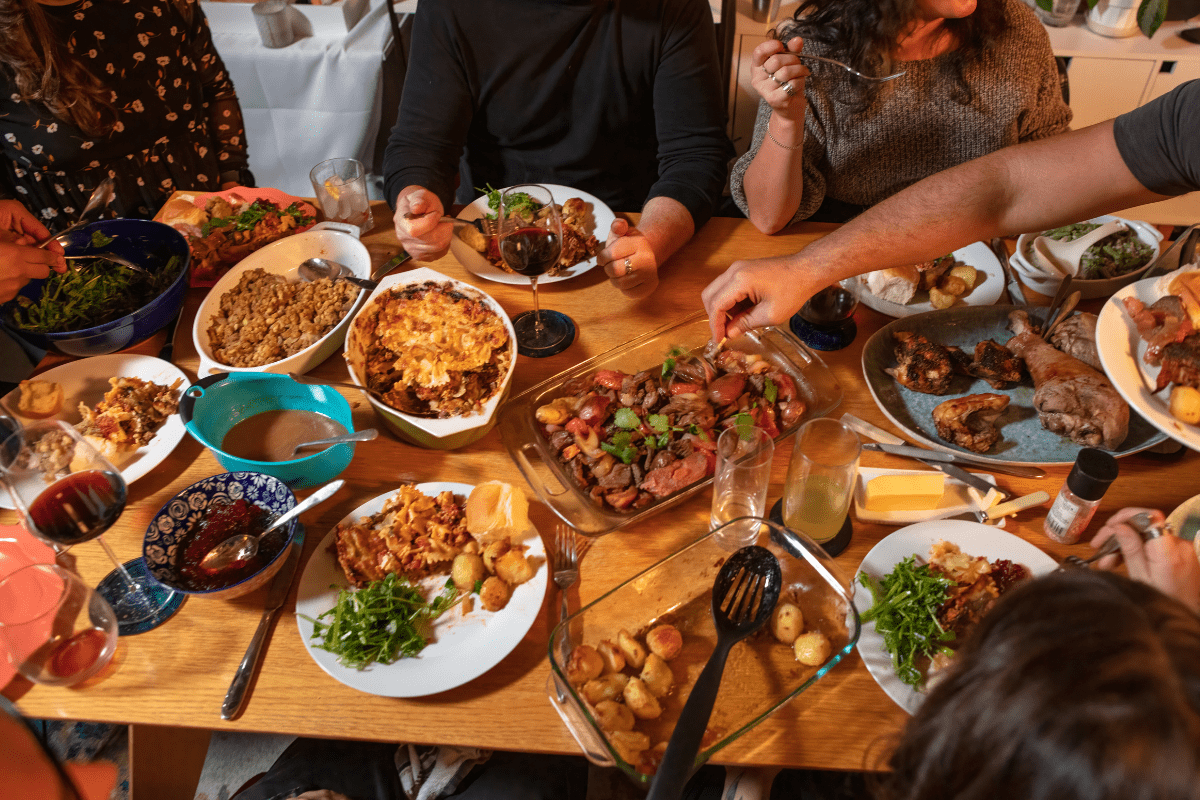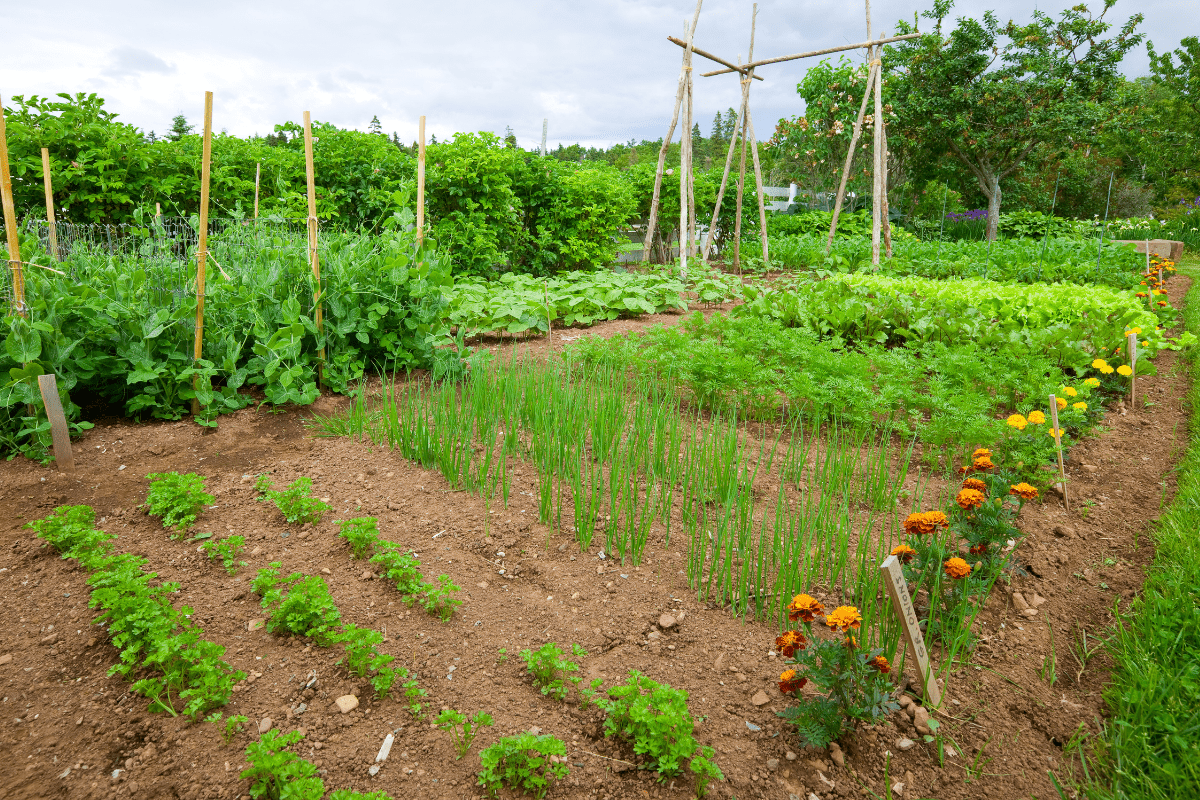When most people think Idaho food, they picture potatoes and… well, more potatoes. But ask any local what their state's real signature dish is, and you'll get a very different answer. Idaho's culinary scene is actually a fascinating mix of Basque heritage, world-class local ingredients, and some surprisingly creative comfort food that'll make you rethink everything you thought you knew about this underrated food destination.
The real Idaho signature dish (hint: it's not potatoes)
Here's something that might blow your mind: locals will tell you Idaho's true signature dish is finger steaks. These aren't some fancy restaurant creation either—they were invented back in the 1950s by a guy named Milo Bybee at the Torch Lounge in Boise, and they've been a local obsession ever since.
The concept sounds almost too simple to work: take quality top sirloin, cut it into strips, marinate it in buttermilk, coat it in seasoned flour, and deep fry it until it's crispy outside but still pink inside. But when done right (like at Lindy's Steak House where they rub the meat with fresh garlic before the flour coating), these things are absolutely addictive.
You can find finger steaks at dive bars and family restaurants across the state, but locals have their favorites:
- Lindy's Steak House in Boise
- Jakers Bar and Grill locations
- Westside Drive-In (local institution)
- The Dutch Goose
- Big Bun Drive-In
What makes them even better? They pair perfectly with Idaho's other beloved condiment—fry sauce. More on that later.
Why Boise has America's best Basque food
Here's something most people don't know: Boise has the largest Basque community in America, with close to 16,000 Basque Americans calling the area home. This isn't just a fun fact—it's completely transformed the local food scene in ways that make Boise genuinely unique among American cities.
The Basque Block is the real deal
Downtown Boise's Basque Block is apparently the only designated Basque district in the entire United States. Walking down Grove Street between Capitol Boulevard and 6th Street feels like you've been transported to northern Spain, complete with authentic restaurants, a cultural center, and even a traditional pelota court.
The Basque immigration story here is pretty interesting too. Many came to Idaho starting in 1891 to work as sheepherders, and later waves arrived fleeing Franco's oppression of Basque culture from 1939 to 1974. They brought their food traditions with them, and thankfully for us, those traditions are still going strong.
What to eat on the Basque Block
The food here isn't watered-down tourist stuff—it's the real deal. Start with croquetas, which are basically fried balls of happiness filled with potatoes, meat, cheese, or fish, then breaded and fried until golden. They're way more complex than they sound and incredibly addictive.
For the full experience, hit up The Basque Market on Wednesday or Friday for their paella demonstrations. Watching them make this saffron-infused rice dish with chicken, seafood, and chorizo is like dinner theater, except you get to eat the performance afterwards.
Restaurant picks that locals actually visit
Leku Ona does this amazing Idaho trout with homemade Basque chorizo that perfectly represents how local ingredients meet traditional techniques. Bar Gernika is famous for their lamb grinders and those addictive croquetas. And honestly, just wandering the Basque Block and popping into whatever looks good is a solid strategy.
The coolest part? Several of these restaurants have James Beard recognition now, including Dan Ansotegui from Ansots, who said his nomination really represents recognition of the entire Basque food scene in Boise.
Local ingredients that'll surprise you
Idaho's got way more going on ingredient-wise than just potatoes (though we'll get to those). The state's diverse geography creates some pretty amazing foraging opportunities and unique agricultural products.
Huckleberries are serious business here
Huckleberries became Idaho's official state fruit in 2000, and locals are genuinely obsessed with them. These tiny, intensely flavored berries are related to blueberries but take nearly two decades to mature, which makes them pretty precious.
Huckleberry season runs from mid-June through August, with the best picking usually happening in July on south-facing slopes. People guard their favorite picking spots like state secrets, but some of the known good areas include:
- Coeur d'Alene National Forest
- Priest Lake area
- Payette National Forest
- Teton Valley region
You'll find huckleberries in everything from pancakes to ice cream to cocktails around the state. There's even a Huckleberry Festival in Donnelly every August that's worth planning a trip around.
Morel mushroom hunting is like treasure hunting
Spring means morel season, and people here take mushroom hunting seriously. These honeycomb-capped fungi have this rich, earthy, nutty flavor that makes them incredibly valuable—both literally and culinarily.
Local foraging expert Robert Spence shared some insider knowledge: morels tend to gravitate toward huckleberry bushes because they both like the moister sides of hills. He also mentioned looking for trillium flowers—when they turn bright pink, that's when the ground is warm enough for morels.
The rules are pretty straightforward: you can harvest up to five gallons daily for personal use without a permit, but commercial harvesting requires special permissions that aren't always available.
Idaho produces some of America's finest caviar
This one really surprises people: Idaho is home to world-class sturgeon caviar production. Fish Breeders of Idaho, started by Leo and Judy Ray in 1973, raises white sturgeon in Snake River spring water to produce what chef Daniel Boulud calls "the finest American caviar you can get."
The operation is pretty incredible—these sturgeon live pampered lives for 12+ years before they're mature enough to produce roe. The caviar they produce is known as "The American Beluga" and seriously competes with the best stuff from the Caspian Sea.
Yes, the potatoes really are that good
Okay, let's talk potatoes because ignoring them would be ridiculous. Idaho produces about 145 million hundredweight of potatoes annually—that's roughly a third of all potatoes grown in the United States. The industry contributes $4 billion to the state economy and supports about 30,000 jobs.
What makes Idaho potatoes special
It's not just marketing hype. Idaho's combination of warm days, cool nights, mountain-fed irrigation, and volcanic soil creates ideal growing conditions. The result is potatoes with a unique texture and flavor that 72% of Americans say they prefer over potatoes from other states.
About 62% of Idaho potatoes get processed into frozen and dehydrated products (hello, french fries), 29% are shipped fresh, and 9% become certified seed potatoes for other growers.
Boise Fry Company takes potatoes seriously
This local chain has turned potato fries into an art form. They use different potato varieties—russet, purple, gold, sweet, red, and yam—and cook them in GMO-free sunflower oil. Their rotating selection of house-made dipping sauces includes Idaho-inspired options like blueberry ketchup and roasted jalapeño ranch.
It's the kind of place that makes you realize how much variety exists in something as simple as a french fry.
Quirky Idaho food traditions worth trying
Idaho has developed some genuinely unique food traditions that you won't find anywhere else.
The famous ice cream potato
Westside Drive-In in Boise has been serving their famous ice cream potato for over 30 years. It's vanilla ice cream molded into a potato shape, coated with cocoa powder to look like skin, then "baked" open and topped with whipped cream and chocolate sauce to mimic sour cream.
It sounds gimmicky, but it's actually delicious and has been featured on Diners, Drive-Ins and Dives. Plus, it's the perfect way to end a meal of actual potatoes.
Fry sauce is everywhere
Technically invented in Utah, fry sauce has been completely adopted by Idahoans as their preferred condiment. It's way more complex than just ketchup and mayo—the ratio is usually one part ketchup to two parts mayo, plus various seasonings that vary by restaurant.
You'll find fry sauce at basically every restaurant in Idaho, from fast food to sit-down places. It's particularly perfect with finger steaks.
Flying Pie's habanero pizza requires a waiver
Only available in August, Flying Pie Pizzeria's habanero pizza is so spicy you literally have to sign a waiver to eat it. They offer single, double, or triple habanero versions depending on your tolerance for pain. It was even featured on Man vs. Food, which should tell you something about the heat level.
Food festivals and seasonal events
Idaho's food festival scene is way more extensive than you'd expect, with events celebrating everything from cherries to soul food.
Major annual festivals to plan around
The Emmett Cherry Festival in June was actually named one of America's best food festivals by Eat This, Not That. It's been running for 88 years and includes cherry pie eating contests and cherry pit spitting competitions.
Every five years, Boise hosts Jaialdi, a massive Basque festival that draws 40,000 people for the last weekend of July. It celebrates Saint Ignatius of Loyola with traditional foods, music, and dancing.
The Idaho Potato Festival in Blackfoot showcases the state's famous spuds with themed dishes, games, and a potato parade that's exactly as wonderfully ridiculous as it sounds.
Getting the most out of an Idaho food trip
If you're planning a food-focused visit to Idaho, timing and location matter quite a bit.
Seasonal considerations
Spring is perfect for morel hunting if you're into foraging. Summer brings peak huckleberry season and most of the major food festivals. Fall offers additional mushroom varieties and harvest celebrations. Winter is ideal for hearty Basque stews and cozy indoor dining experiences.
Where to base yourself
Boise is obviously the hub, especially if you want to experience the Basque culture and hit multiple restaurants. The Basque Block alone could keep you busy for a long weekend.
For the full Idaho ingredient experience, consider spending time in the Magic Valley region for fresh trout and sturgeon, or northern Idaho for prime foraging opportunities.
The best part about Idaho's food scene is how genuine it feels. These aren't manufactured food trends or Instagram-bait dishes—they're real food traditions that locals actually care about and have been perfecting for generations. Whether you're biting into perfectly crispy finger steaks or watching paella come together on the Basque Block, you're experiencing something authentically Idaho.
Just don't leave without trying the ice cream potato. Trust me on this one.





